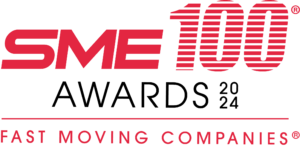Crafting a successful HR strategy involves aligning your people practices with your company’s overall goals. By following these 10 tips and leveraging the power of Emspaced HRMS, you can create a strategic HR plan that drives organizational success.
1. Align HR with Business Goals:
Ensure your HR initiatives are directly linked to your company’s long-term objectives.
Develop HR strategies that support your company’s growth, expansion, and innovation plans.
Create a clear alignment between HR goals and business objectives to ensure your people are equipped to drive success.
2. Conduct a Workforce Analysis:
Gain a comprehensive understanding of your current talent landscape.
Identify skill gaps, potential talent shortages, and areas for improvement.
Use workforce analysis to inform your recruitment, training, and development strategies.
3. Prioritize Employee Experience:
Create a positive and engaging work environment that fosters employee satisfaction and loyalty.
Implement initiatives to improve employee onboarding, development, and recognition programs.
Focus on building a strong company culture that aligns with your values and attracts top talent.
4. Embrace Data-Driven HR:
Utilize people analytics to make informed decisions and track the effectiveness of HR initiatives.
Use data to identify trends, measure performance, and optimize your HR strategies.
Leverage HRMS tools to gather and analyze data, such as employee turnover rates, performance metrics, and training completion rates.
5. Develop a Strong Employer Brand:
Create a positive and attractive employer brand that differentiates your company from competitors.
Showcase your company’s culture, values, and employee benefits to attract top talent.
Utilize social media, employee testimonials, and other marketing channels to promote your employer brand.
6. Implement Succession Planning:
Identify potential leaders within your organization and develop them for future leadership roles.
Create clear career paths and succession plans to ensure organizational continuity.
Provide targeted training and development opportunities to prepare employees for leadership positions.
7. Promote Flexibility:
Offer flexible work arrangements, such as remote work, flexible hours, or hybrid models, to meet the needs of your employees.
Foster a culture of trust and accountability to support flexible work arrangements.
Consider the benefits of flexibility on employee satisfaction, productivity, and work-life balance.
8. Focus on Employee Well-being:
Prioritize employee mental and physical health to create a supportive and healthy work environment.
Offer wellness programs, mental health resources, and work-life balance initiatives.
Foster a culture of well-being where employees feel valued and supported.
9. Invest in Continuous Learning and Development:
Provide ongoing training and development opportunities to keep your workforce skilled and adaptable.
Identify skill gaps and develop training programs to address them.
Encourage employees to take ownership of their professional development and pursue continuous learning.
10. Maintain a Dynamic Strategy:
Regularly review and adjust your HR strategy to adapt to changing business needs and industry trends.
Stay informed about industry best practices and emerging HR trends.
Use feedback from employees and stakeholders to refine your HR strategy.
Emspaced HRMS can streamline your HR processes, provide valuable insights, and help you implement these strategies effectively.
Schedule a free demo for Emspaced HRMS today!






